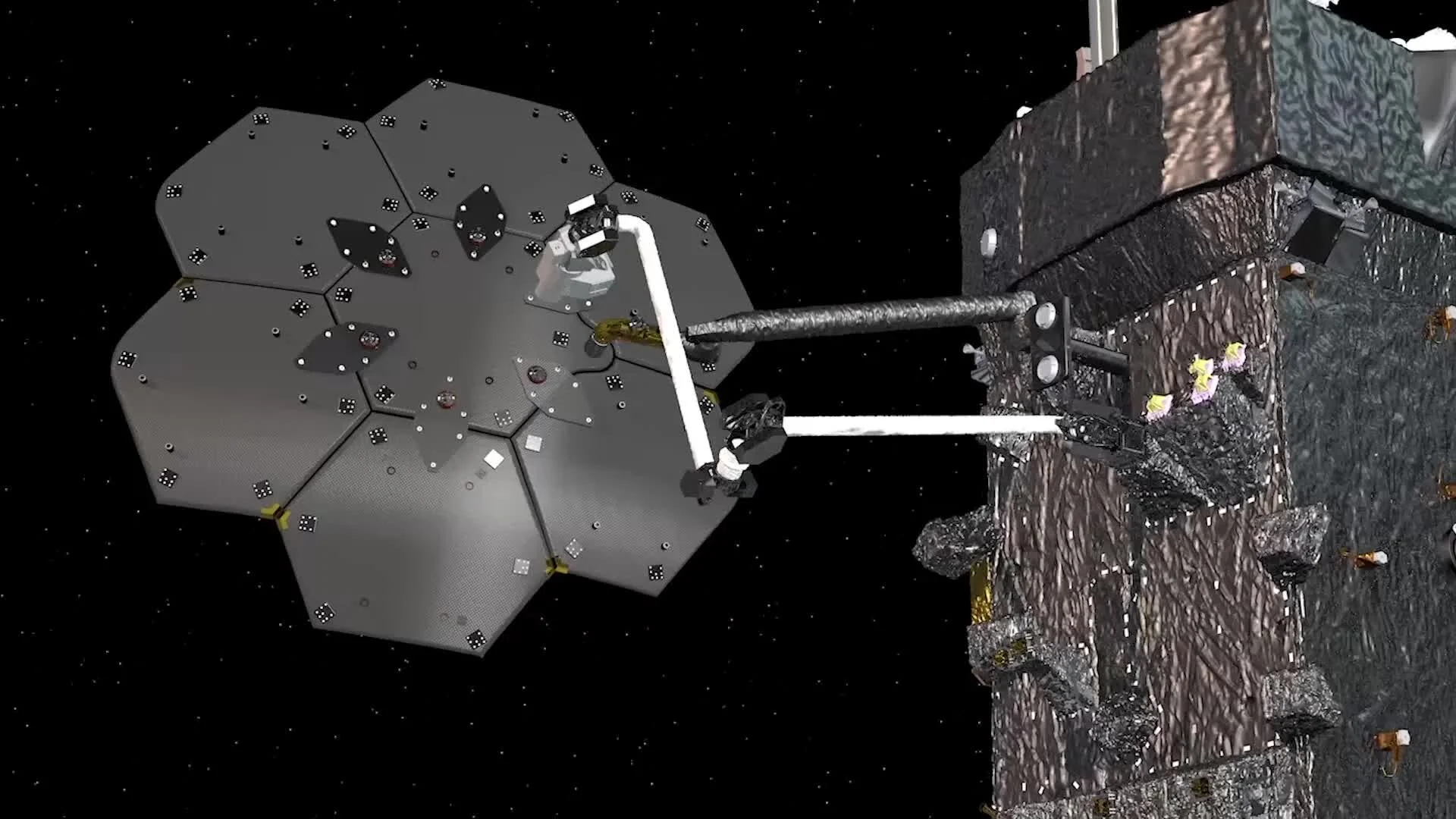A new deorbit tether will be tested by Aurora Propulsion Technologies in December 2020. The 1.5U CubeSat test will ride to space on a SpaceX Falcon 9 rocket, after which it will be propelled to a sun-synchronous orbit via Momentus Space Vigoride. In addition to the tether, Aurora will test and utilize their new water thrusters for cubesat control.
Read MoreNASA’s upcoming Restore-L mission will seek to service a low-Earth orbit satellite, bringing it closer to its original state. The spacecraft is planned to launch in 2023, where it will demonstrate autonomous rendezvous, refueling, repairing, and manufacturing tasks. NASA has used public-private partnerships to procure technology payloads for this mission in order to promote industry innovation at low cost.
Read MoreChina dominates. Asteroid mining dies but attends its own funeral. Reusable rockets lower the cost and increase access to space. The Moon, Mars, and asteroids all get new survey maps for water resources. Water-based thrusters perform well in orbit. Asteroids are blasted and samples collected. Space mining gets more legal scaffolding. The Moon gets one new rover and two new craters.
Read MoreWater is the first resource many in the space resources community are targeting for exploration and utilization missions. Not only is water abundant throughout the Solar System, but it is one of the most useful resources. Its uses include the creation of propellant and oxidizer, use in chemical processes, and as drinking water and breathing oxygen for astronauts. Water is the oil of space. Similar to how oil drives terrestrial economies, water in space will propel the space economy, literally and figuratively.
Read MoreSpace manufacturing has been on the horizon for decades without success. However one major hurdle past efforts failed to overcome was obtaining regular and affordable access to low Earth orbit. This capability was expected to be provided by the space shuttle, though it never materialized. In recent years, however, the problem has been reduced due to a rapidly growing set of commercial launch providers. Because of this change, space manufacturing has the potential to rapidly become a reality.
Read MoreSwarm Technologies is making progress on launching its 150 CubeSat strong IoT constellation. As IEEE reported on January 3, 2019, Swarm submitted a request to the FCC for permission to launch its full constellation into low Earth orbit (LEO). Swarm has indicated that it will be ready to launch at least four more satellites as soon as March 1. Global competition in the IoT satellite field is fierce, with Swarm pushing hard to gain market share for itself.
Read MoreESA recently demonstrated the use of a butane based cold gas propulsion system to adjust the orbit of the GomX-4B CubeSat. GomX-4B was able to maintain formation with its twin, GomX-4A, up to the curvature of Earth, 4500 km away. This mission is verifying the operation for a planned CubeSat constellation. Refining CubeSat propulsion like this is key for future asteroid surveying and processing spacecraft.
Read MoreAfter raising $500 million in funding and receiving FCC permission for launch and operations, SpaceX is making good progress towards launching the first wave of satellites for its Starlink Constellation in 2019. The SpaceX Starlink was originally proposed by Elon Musk in 2015 to provide high bandwidth global internet using 11,927 satellites. If launched, Starlink promises to be the largest satellite constellation by a substantial margin.
Read More






